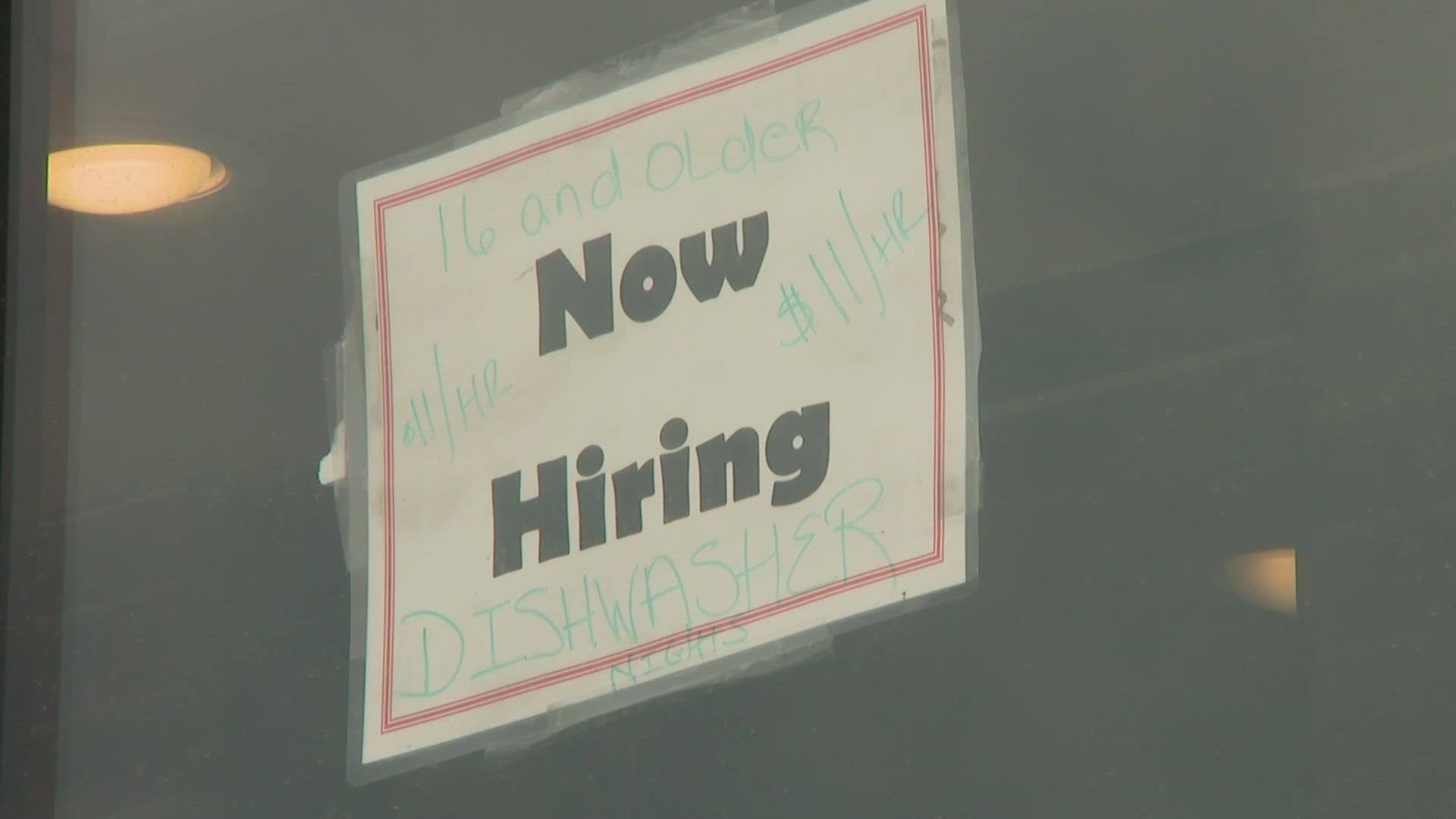DALLAS — Editor's note: This article was originally published in the Dallas Business Journal here.
The Covid-19 pandemic fueled a historic level of workers quitting their jobs in what became known as the Great Resignation.
But the tide is changing, and workers are instead biding their time for better offers as the Great Resignation gives way to the "big stay."
Nela Richardson, senior economist for ADP Research, said workers resigned from 50 million jobs last year, the highest number since the government started tracking quits in 2000. Since the height of the pandemic, the quit rate has fallen, more workers have returned to the workforce and the economy continues to create a robust amount of jobs.
Quits fell by about 5% in the first three months of 2023 compared to the previous three months, and 10% from the first three months of 2022, according to Richardson.
“All the data points to a slowdown in worker turnover as the job and labor markets slow-walk their way back to something approaching pre-pandemic trends. The Big Quit of 2022 could be easing into the Big Stay of 2023,” Richardson wrote in a recent blog post.
Part of that is that workers who switched jobs during the pandemic saw big gains in pay. ADP Pay Insights data showed that the year-over-year pay increase for a worker switching their job peaked in June 2022 at 16.4%. In April 2023, the pay gains for workers switching jobs was 13.2%, the lowest growth since November of 2021.
Sarah Wittman, assistance professor of management at George Mason University’s School of Business, said more workers are biding their time until better offers come up.
“Most workers today have an important cost-benefit analysis to do: jump ship into an unknown where you may not have a track record of creating company value or a relational network that would save you during layoffs, or stay put and put up with your current employer despite their imperfections … so long as it is not intolerable and you can keep paying your bills,” Wittman told The Playbook.
Meanwhile, companies are more reluctant to extend big offers to talent.
“Likewise, many companies have been burned by employees who have ‘greatly resigned,’ making them reluctant to get into a bidding war for labor whose commitment only lasts until their next better offer,” Wittman said.
Economic instability is also likely playing a factor in the decrease in quits, Wittman said. Increased interest rates from more than a year of Federal Reserve rate hikes means increased costs and workers more reluctant to risk their current job for a new one.
But that doesn’t mean companies are off the hook. If companies don’t make sure their employees feel taken care of at a time of rising costs and payments, they will leave when they get an opportunity, Wittman said.
“Rules of supply and demand in a free-market and labor-mobile economy suggest that things will eventually even out: those companies that treat their workers well generally have better retention rates, even when the pay they offer is not top-of-industry, and those workers who job hop for salary or for other reasons will eventually either find a fit or enough to make do,” Wittman said.
In the months leading up to the pandemic, the quit rate hovered around 2.3%. After an initial collapse in March and April 2020, the quit rate surged as workers left jobs en masse in industries such as hospitality, retail and food services. The quit rate peaked at about 3% in November of 2021 and hovered just below that before starting to fall in April 2022.
In April 2023, the quit rate fell again to 2.4%.
Meanwhile, job openings have fallen from their peak of about 12 million, but continues to hover around 10 million. In April, there were 10.1 million job openings, according to the Bureau of Labor Statistics.
After briefly climbing to 1.2% in March, layoffs have since fallen back down, despite high-profile layoffs among tech giants.
Experts say companies will ultimately still need to step up their game to retain employees over the long term — especially as the labor market is expected to remain tight in the coming years due to demographic shifts and other factors. That means focusing on pay transparency and making sure workers feel fairly treated — and confident in the future of the company they work for, according to a recent study by Payscale Inc.
“Although employees are slightly less likely to leave their jobs now than during the Great Resignation, there is and will continue to be an increase in demands from employees, and companies must directly address and understand what they can do to meet those requests in order to retain their workforce,” said Lexi Clarke, chief people officer at Payscale. “Employees are most likely to put in their notice if a company’s long-term viability is questionable or if they perceive that their pay is unfair."
More Texas headlines:

